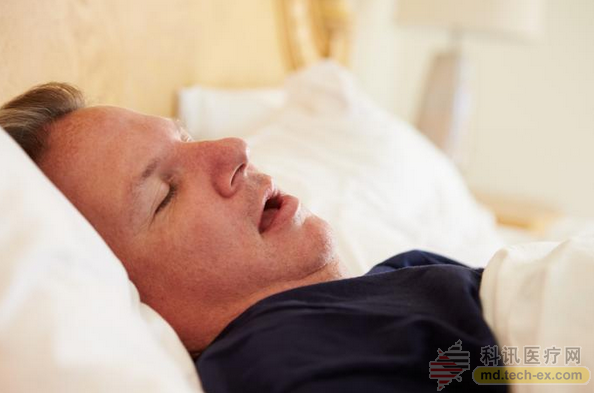Implantable stimulation device can effectively alleviate sleep apnea symptoms
Release date: 2016-06-15

Dr. Richard Schwab, director of the Sleep Center at the University of Pennsylvania School of Medicine, and colleagues recently publicly released their findings at the 30th annual meeting of Sleeping Professionals, Inc., held in Denver, Colorado, USA.
It is estimated that more than 18 million adults in the United States have obstructive sleep apnea (OSA), which is more common in men than in women.
This disease is caused by the collapse of the muscles in the back of the throat during sleep, which closes and blocks the airflow. This can result in short and repeated apneas that last for at least 10 seconds each time.
According to the National Sleep Foundation, obstructive sleep apnea (OSA) can cause sleep disruption and hypoxemia, increasing the risk of mood and memory disorders, high Blood Pressure and heart disease.
The first line of treatment for obstructive sleep apnea (OSA) is continuous positive airway pressure (CPAP). A mask is placed over the patient's nose and/or mouth during sleep to prevent apnea by providing a continuous airflow.
Although this is an effective treatment for many OSA patients, some patients have responded poorly, highlighting the need to find an effective alternative.
In this latest study, Dr. Schwab and colleagues show how a technique called sublingual nerve stimulation (HGNS) meets this need.
What is hypoglossal nerve stimulation (HGNS)?
Hypoglossal nerve stimulation (HGNS) refers to the sublingual nerve that gently stimulates the patient during sleep—the nerve that controls the movement of the tongue to expand the upper airway and improve airflow in and out.
The technology includes a battery powered device consisting of a breathing sensor, a generator and a stimulation trigger. The device monitors the patient's breathing pattern and stimulates the hypoglossal nerve when an apnea is sensed.
In a previous study, the so-called Sterling Syndrome Stimulation Therapy (STAR) trial, the researchers found that the number of apneas in HGNS OSA patients was reduced by 78% and the number of hypoxic events was reduced by 80%.
The study found that these results persisted after 3 years of implantation.
The results of the study led HGNs to be approved by the US Food and Drug Administration (FDA) in 2014 for the treatment of OSA patients who responded poorly to CPAP.
However, Dr. Schwab and colleagues note that the STAR trial was conducted under controlled conditions. Is HGNS still effective in the real world? This is exactly what the research team is going to investigate.
HGNS reduces apnea by 84%
In their study, the researchers analyzed the clinical efficacy of 20 OSA patients who were implanted with HGNS devices at the University of Pennsylvania between January 2015 and March 2016.
Specifically, they assessed the severity of OSA in each patient before and after device implantation, depending on the total sleep apnea hypopnea index (AHI), which measures the number of apneas that occur during sleep.
They also measured changes in nighttime blood oxygen levels in each patient before and after device implantation.
The researchers found that OSA patients had an average of 35 apneas per hour after implantation of the HGNS device, a reduction of 84%.
In addition, they determined that the patient's blood oxygen levels increased by at least 11%.
Based on the results of this experiment, the authors believe that HGNS is an effective alternative to patients with poor response to CPAP.
“Considering that sleep apnea can lead to high blood pressure, heart disease, stroke and other serious health problems, it is important that the device we study can be used as an alternative to CPAP for the treatment of patients with sleep apnea.
Obstructive sleep apnea does not have a perfect treatment, but our preliminary data show that sublingual nerve stimulation can effectively treat patients with sleep apnea who cannot tolerate CPAP. Dr. Richard Schwab said.
Â
Http://
Source: Noble
Today, Chemical Products play an important role in our life, with the development of science and technology, at first, only by soda ash, chemical products and other inorganic sulfate product and plant extracts, organic products, to develop a hybrid multiple industries and variety of industries, mainly and plastic chemical industry, synthetic fiber, oil, rubber, pharmaceutical, dye industry, etc. They are all departments that use chemical reactions to change the structure, composition, morphology and other chemical products. Such as: inorganic acid, alkali, salt, rare elements, synthetic fiber, plastic, synthetic rubber, dye, paint, chemical fertilizer, pesticides, etc.
Our main Chemical Products are:ETHYL 2-CHLOROBENZOATE,Allylthiourea,Chloro-2-Methylpropane,Sodium 4-propan-2-ylbenzenesulfonate,POLY(ISOBUTYL METHACRYLATE),Resin Acids,Decaglyceryl Monooleate,Heptafluorobutanol,Aluminum Acetate,Allyl Methacrylate,2-Bromopentane,Sulfuryl Chloride.
We are a biotechnology company in pharmaceutical raw materials production research and development, We had passed FDA certificate and ISO 9001 .we have enough experience, our company has the GMP production workshop and standard plant extraction equipment dozens of Taiwan, starting in 2012, in response to increase export of national policy, our company started drug raw materials exports, at present, the company has 50 people the size of the foreign trade sales team, Annual sales are $30 million. We can produce high quality of Vitamin Products, at the same time, we are factory price of Vitamin K2 Powder, extracted by professional production equipment, can produce supply Vitamin And Enzyme,
Tributyl Phosphate, TBP,ANTIFOAMT, AURORA KA-1641, BUTYL PHOSPHATE
Xi'an Henrikang Biotech Co.,Ltd , https://www.henruikangbio.com